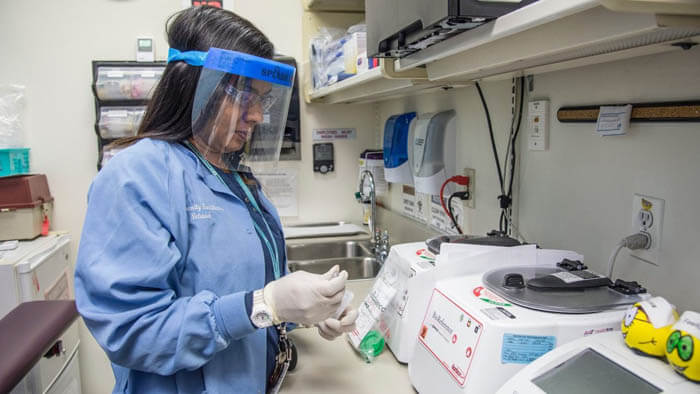As COVID-19 cases in the U.S. rise to record levels, Direct Relief today announced $5 million in grants to expand testing, triage and treatment in diverse, underserved communities disproportionately affected and at greater risk from the virus.

The funding from Direct Relief will be provided through the Direct Relief + Abbott Fund COVID-19 Community Grant Program, made possible by a donation from the Abbott Fund, the foundation of the global healthcare company Abbott.
The grants will support 25 federally qualified health centers in California, Florida, Illinois, Massachusetts, New Jersey and New York. The program helps health centers to strengthen their capabilities to safely and effectively screen, test, triage and treat COVID-19 cases and provide clinical education to patients in the communities they serve.
Nearly 30 million people in the U.S. – a majority of whom are members of underserved ethnic and racial groups – rely on federally qualified health centers for their health care needs. “Health centers across the U.S. are on the frontlines of the COVID-19 pandemic, and their work is more critical than ever,” said Direct Relief President and CEO Thomas Tighe. “Through these grants, Direct Relief and the Abbott Fund aim to bolster the efforts of the safety-net health facilities on which so many patients, families and communities rely for care and guidance in this public health crisis.”
The 25 health centers to receive funding include the following:
- San Fernando Community Health Center, CA
- Northeast Valley Health Corporation, CA
- JWCH Institute Inc., CA
- Universal Community Health Center, CA
- Comprehensive Community Health Centers, CA
- Los Angeles Christian Health Centers, CA
- Westside Family Health Center, CA
- AAA Comprehensive Healthcare, CA
- Family Health Care Centers of Greater Los Angeles, CA
- Community Health Alliance of Pasadena, CA
- St. John’s Well Child and Family Center, CA
- Via Care Community Health Center, CA
- QueensCare Health Centers, CA
- Herald Christian Health Center, CA
- Borinquen Medical Centers, FL
- Camillus Health Concern, FL
- Jessie Trice Community Health System, Inc., FL
- Esperanza Health Centers, IL
- Erie Family Health Centers, IL
- Lynn Community Health Center, MA
- Harvard Street Neighborhood Health Center, MA
- North Hudson Community Action Corporation, NJ
- Open Door Family Medical Center Inc., NY
- Community Healthcare Network NY,
- William F. Ryan Community Health Center, NY

